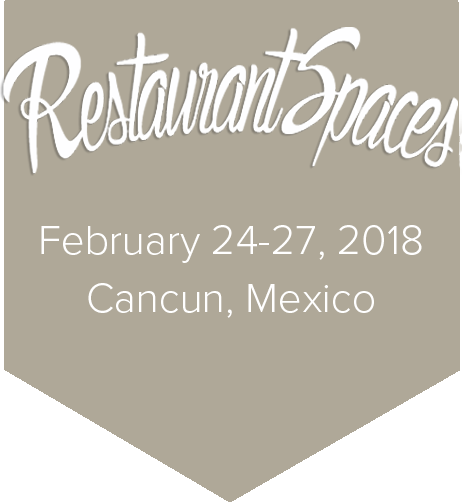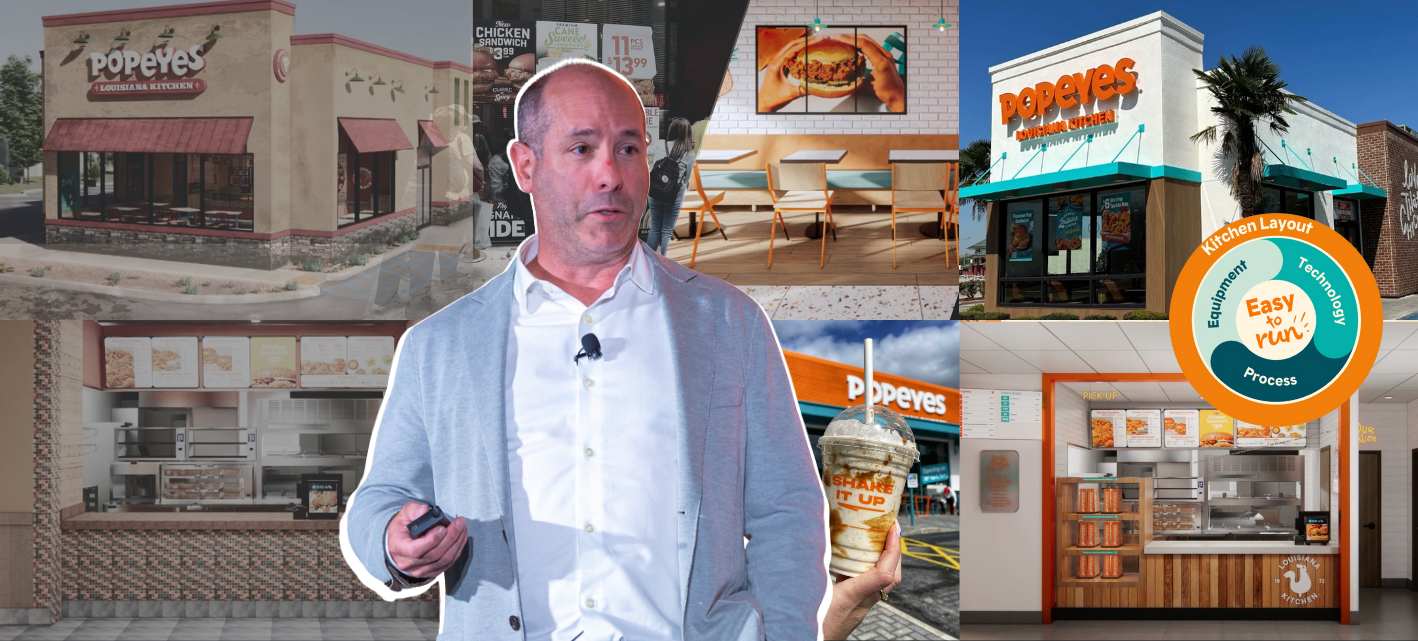"I want to drop the mic when we open this concept," Yum! Brands CEO David Gibbs told Christophe Poirier when giving him the green light to create Saucy, KFC's newest restaurant innovation. At RestaurantSpaces, Poirier, Chief New Concept Officer at KFC, revealed how this mandate for excellence drove a 322-day sprint from blank page to opening day, breaking every QSR convention along the way.
Disruption by Design
What happens when you take a 20-year QSR veteran and give him complete freedom to reinvent fast food? For Poirier, the answer was starting with a clean slate and challenging every industry convention.
"When you want to be disruptive, you can't go against the stream, but you need to find your own way," Poirier explained. While competitors chase the same trends—"chicken, coffee, and AI" according to his ChatGPT query—Saucy intentionally breaks from the pack.
Most notably, Saucy doesn't even include "chicken" in its name, despite selling chicken. This deliberate choice signals a fundamental shift in perspective: "The sauce is the core, and chicken has become the side," Poirier explained. "It's not about food anymore. It's about the vibe."
From T-Bones to Frozen Patties: Why Committees Kill Innovation
Perhaps the most radical aspect of Saucy's development was Poirier's approach to the team structure. After receiving a clear directive from Yum! Brands CEO David Gibbs ("I want to drop the mic when we open this concept"), Poirier made a bold decision: outsource everything and eliminate internal committees.
"Give a steering committee a T-bone, and after a few meetings, the T-bone becomes a frozen patty," he quipped. "You start with a racing horse, and at some point, it becomes a camel—and a camel is a horse designed by a committee."
Instead, Poirier worked with outsiders from the cosmetics and luxury industries—brands like OPI, Drunk Elephant, and Sephora—to create a restaurant concept with a distinctive vibe. "What if OPI and Drunk Elephant had to work on a food concept? That would be Saucy," he explained.
Inverting the Development Process
Traditional restaurant development starts with the menu, follows with design, and adds technology last. Saucy flipped the script completely.
"We started like Tesla," Poirier revealed. "We started with digital and tech. We built the restaurant and the brand around tech and digital." This tech-first approach shaped everything from the restaurant's physical design to its operations.
The resulting space looks nothing like traditional QSR. Eschewing the industry's typical red-white-black color schemes, Saucy embraces pink—which Poirier defines through his own acronym: Personalized, Instinctive, Next, and Kinetic. This translates to 27 points of personalization in the app, constantly rotating digital elements (no static window decals, only screens), and a relentless focus on innovation.
"Many times, innovation is a one-off. Sales are not good, let's focus on innovation for three months, and then we put innovation on hold," Poirier noted. "At Saucy, it's always on. Every single day I ask my team, 'What's next?'"
Combating Boredom, Creating Traffic Jams
"My competition is boredom. For Gen Z, boredom is kryptonite," Poirier explained when asked about Saucy's rivals. This insight shaped everything from the menu to the atmosphere.
Instead of standard ranch sauce, they offer "Pure, Pure Ranch." Basic lemonade was replaced with spicy watermelon variants. DJs perform in the kitchen every Wednesday for "Sauce-day"—because as Poirier puts it, "food tastes better when people cooking it have a good time."
The approach worked almost too well. When Saucy opened in Orlando, the response overwhelmed even Poirier's ambitious expectations. "We had millions of views online, and the cops had to come because we blocked the highway for almost 10 days," he shared. The restaurant became so crowded they had to shut down in the afternoons. Local officials delivered a clear message: "You're disrupting the industry, but you're also disrupting traffic. And this is no bueno."
The Big Takeaway: Vibe Over Experience
As restaurant design and technology continue to evolve, Poirier believes the industry needs to shift from focusing on "experience" to cultivating a distinctive "vibe."
"An experience is an interaction. A vibe is a feeling," he explained. "The magic of luxury brands in France is you don't need to own a Louis Vuitton bag to get the feeling about the Louis Vuitton brand."
For designers and developers looking to create next-generation restaurant concepts, Poirier's parting advice was simple: "Remember you are not only launching a restaurant, you are launching a vibe, a brand. There are so many restaurants in this country, but there are very few giving you an amazing vibe."
The result of his 322-day journey from white paper to opening day proves his point—and offers a bold new template for rethinking what fast food can be.
Watch the full talk below: 👇

Posted by
Chain Restaurants Reimagined.
The Retreat to Reimagine Restaurant Development, Design + Technology.
April 12-14, 2026 | Miami, FL



-2.png)


-3.png)
-4.png)
-3.png)



Comments